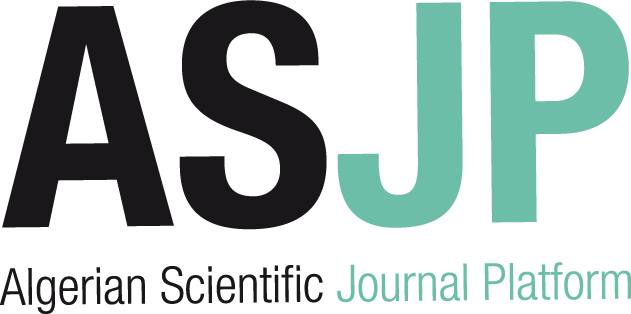[article]
| Titre : |
Field investigations on performance of T-haped deep mixed soil cement column–supported embankments over soft ground |
| Type de document : |
texte imprimé |
| Auteurs : |
Song-Yu Liu, Auteur ; Yan-Jun Du, Auteur ; Yao-Lin Yi, Auteur |
| Année de publication : |
2012 |
| Article en page(s) : |
pp. 718–727 |
| Note générale : |
Géotechnique |
| Langues : |
Anglais (eng) |
| Mots-clés : |
Embankment Cement Field tests Pore pressure Settlement Soil mixing Soft soils |
| Résumé : |
The soil cement deep mixing method has been used to improve soft clayey soils under embankment loading conditions. A compacted granular fill layer or geosynthetic reinforcement layer is placed over the top of soil cement deep mixed (DM) columns to reduce differential settlement between DM soil and the surrounding untreated soil, which, in turn, increases embankment stability. Typically, in conventional deep mixing methodology, the soil cement columns are closely spaced, indicating large area replacement ratios in the construction projects. Such practice could increase construction costs substantially. In this research, a new type of DM column, called a T-shaped DM (TDM) column, was designed and used as an alternative to the large-area-replacement-ratio DM columns employed in the field. Unlike in the conventional column, the cross section of the new column varies along the installation depth. Large amounts of cement slurry are injected and thoroughly mixed with the native shallow soil using specially designed mixing blades. At greater depths, deep mixing methodology is applied only to smaller-diameter columns, resulting in large-diameter columns near the surface and smaller-diameter columns deeper. Field trials were conducted to investigate the performance of TDM column–supported soft ground under embankment loading. For comparison, performance of conventional DM column–supported soft ground under similar embankment loading is presented. Differences in quality control studies and in situ plate loading tests on TDM and conventional DM columns are discussed. Under field embankment loading conditions, stress concentration ratio, excess pore water pressures generated in the soft clays, total monitored settlement, and lateral soil displacement near embankment toes are analyzed and discussed for both treatments. It is concluded that TDM columns have considerable advantages over conventional DM because they both mitigate settlement and enhance the performance of the embankments while reducing construction costs. |
| ISSN : |
1090-0241 |
| En ligne : |
http://ascelibrary.org/doi/abs/10.1061/%28ASCE%29GT.1943-5606.0000625 |
in Journal of geotechnical and geoenvironmental engineering > Vol. 138 N° 6 (Juin 2012) . - pp. 718–727
[article] Field investigations on performance of T-haped deep mixed soil cement column–supported embankments over soft ground [texte imprimé] / Song-Yu Liu, Auteur ; Yan-Jun Du, Auteur ; Yao-Lin Yi, Auteur . - 2012 . - pp. 718–727. Géotechnique Langues : Anglais ( eng) in Journal of geotechnical and geoenvironmental engineering > Vol. 138 N° 6 (Juin 2012) . - pp. 718–727
| Mots-clés : |
Embankment Cement Field tests Pore pressure Settlement Soil mixing Soft soils |
| Résumé : |
The soil cement deep mixing method has been used to improve soft clayey soils under embankment loading conditions. A compacted granular fill layer or geosynthetic reinforcement layer is placed over the top of soil cement deep mixed (DM) columns to reduce differential settlement between DM soil and the surrounding untreated soil, which, in turn, increases embankment stability. Typically, in conventional deep mixing methodology, the soil cement columns are closely spaced, indicating large area replacement ratios in the construction projects. Such practice could increase construction costs substantially. In this research, a new type of DM column, called a T-shaped DM (TDM) column, was designed and used as an alternative to the large-area-replacement-ratio DM columns employed in the field. Unlike in the conventional column, the cross section of the new column varies along the installation depth. Large amounts of cement slurry are injected and thoroughly mixed with the native shallow soil using specially designed mixing blades. At greater depths, deep mixing methodology is applied only to smaller-diameter columns, resulting in large-diameter columns near the surface and smaller-diameter columns deeper. Field trials were conducted to investigate the performance of TDM column–supported soft ground under embankment loading. For comparison, performance of conventional DM column–supported soft ground under similar embankment loading is presented. Differences in quality control studies and in situ plate loading tests on TDM and conventional DM columns are discussed. Under field embankment loading conditions, stress concentration ratio, excess pore water pressures generated in the soft clays, total monitored settlement, and lateral soil displacement near embankment toes are analyzed and discussed for both treatments. It is concluded that TDM columns have considerable advantages over conventional DM because they both mitigate settlement and enhance the performance of the embankments while reducing construction costs. |
| ISSN : |
1090-0241 |
| En ligne : |
http://ascelibrary.org/doi/abs/10.1061/%28ASCE%29GT.1943-5606.0000625 |
|


 Ajouter le résultat dans votre panier Faire une suggestion Affiner la recherche
Ajouter le résultat dans votre panier Faire une suggestion Affiner la rechercheField investigations on performance of T-haped deep mixed soil cement column–supported embankments over soft ground / Song-Yu Liu in Journal of geotechnical and geoenvironmental engineering, Vol. 138 N° 6 (Juin 2012)











